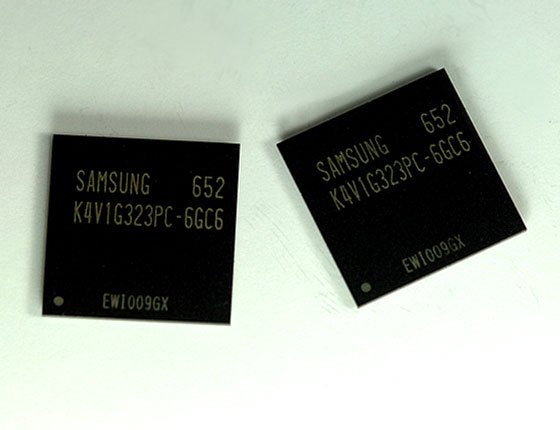PC Share of DRAM Shipments Drops Below 50% Since 1980s
PCs are still the main destination for all DRAM manufactured today...but it's declining.
PCs are still the main destination for all DRAM manufactured today, but the PC's share is declining and, for the first time in a generation, PCs have not captured the majority of the DRAM market, market research firm IHS said.
The popularity of tablets and smartphones is to blame for this trend, as PCs accounted for only 49.0 percent of DRAM capacity shipped in the second quarter of this year, down from 50.2 percent in the first quarter. IHS believes that the share will continue to decline and drop to just 42.8 percent by the fourth quarter in 2013. DRAM held a market share of more than 50 percent since the 1980s.
Tablets currently account for 2.7 percent and phones for 12.5 percent. By the end of 2013, IHS expects tablets to be at 6.9 percent and phones at 19.8 percent.
“The arrival of the post-PC era doesn’t mean that people will stop using personal computers, or even necessarily that the PC market will stop expanding,” said Clifford Leimbach, memory analyst at IHS. “What the post-PC era does mean is that personal computers are not at the center of the technology universe anymore - and are seeing their hegemony over the electronics supply chain erode. PCs are no longer generating the kind of growth and overwhelming market size that can single-handedly drive demand, pricing and technology trends in some of the major technology businesses.”
the majority of tablets today use just 512 MB or 1 GB of DRAM, but IHS believes that this amount will grow. By 2015, the common tablet will integrate 2 GB and grow by 30 to 40 percent annually after that.
Contact Us for News Tips, Corrections and Feedback
Get Tom's Hardware's best news and in-depth reviews, straight to your inbox.

Wolfgang Gruener is an experienced professional in digital strategy and content, specializing in web strategy, content architecture, user experience, and applying AI in content operations within the insurtech industry. His previous roles include Director, Digital Strategy and Content Experience at American Eagle, Managing Editor at TG Daily, and contributing to publications like Tom's Guide and Tom's Hardware.
-
rantoc I knew who would have written this long before i opened it, the doom prophet strikes again.Reply
Haven't needed to buy new ram in years even with several builds - There have been no need as the mem specs are still the same... -
memadmax Give us software worth upgrading our computers for.....Reply
I got 6 gigs of ram and I rarely take up 4 gigs unless I'm running virtual OS's... -
ohim @memadmax well in the past gaming was mostly the main reason the PC was upgraded but since game developers are stuck at making games for consoles ... you got your answer... of course this from the gaming perspective only. That`s the main reason that the games graphics haven`t evolved since few years already ... because they have the scrap any high details to make them work on several years old console hardware.Reply -
greghome I don't find this surprising considering how Smartphones and Tablets have jumped in sales over the yearsReply -
dgingeri It's Microsoft's 'fault'. They've been driving the memory business for years with new OSes. The last two, though, don't demand more memory. Therefore, the memory market takes a little dip. That, combined with the new smartphone and tablet markets, cause it to dip below 50%. woopee. Not really that unexpected.Reply -
ubercake What this means is we PC gamers better get used to the idea of lame finger-swipey games when companies quit producing parts for real machines.Reply -
Thunderfox Most computers out there today are good enough for what most people use them for, so they are not being replaced as fast. Mobile devices are considered disposable by nature, so people throw them out every couple of years for the new model.Reply
I bought 16 gigs of ram for less than $200. I remember when 16 MEGS for that price would have been an awesome deal.
The problem is that there just isn't enough software that can use it all.
